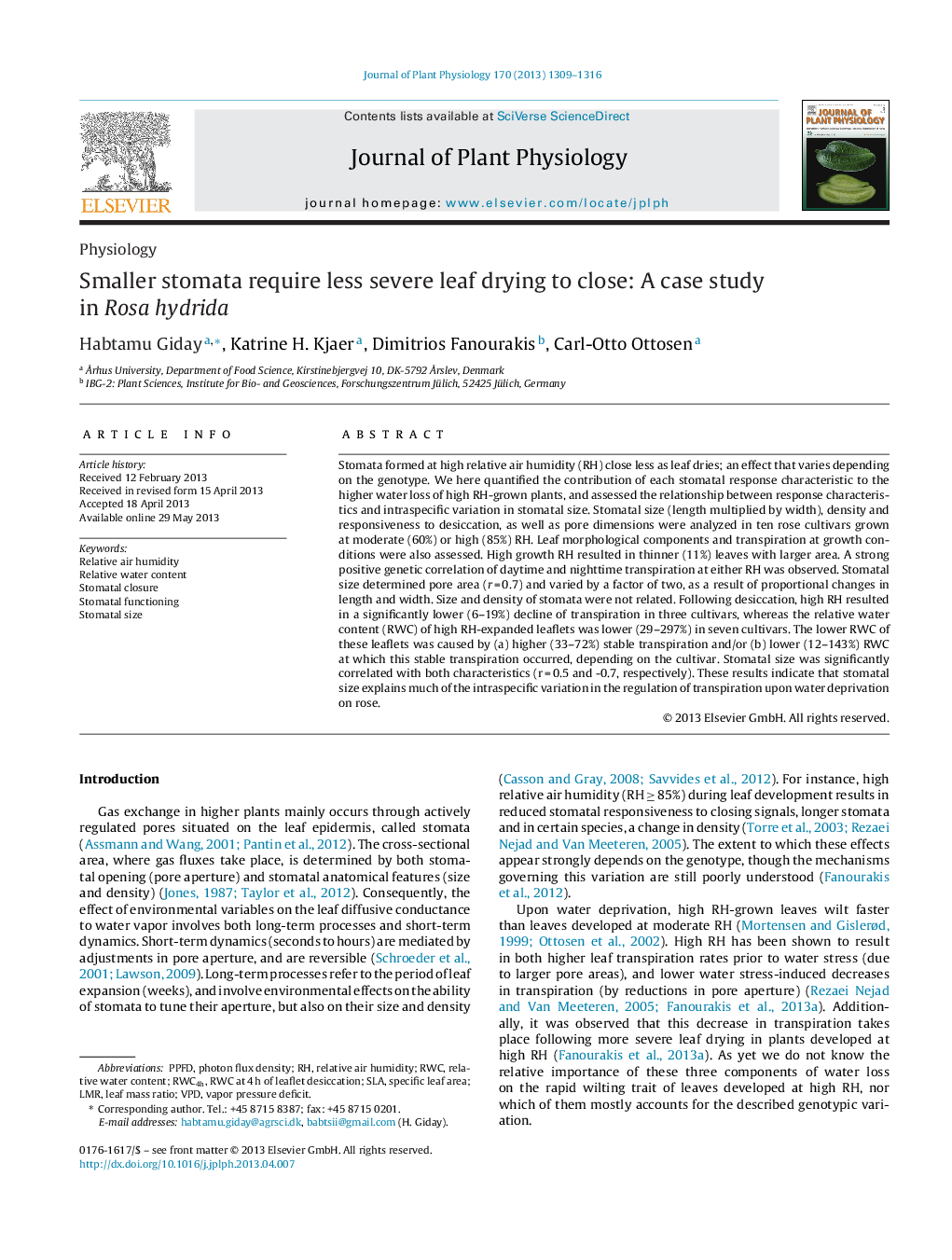| کد مقاله | کد نشریه | سال انتشار | مقاله انگلیسی | نسخه تمام متن |
|---|---|---|---|---|
| 2055998 | 1075795 | 2013 | 8 صفحه PDF | دانلود رایگان |

Stomata formed at high relative air humidity (RH) close less as leaf dries; an effect that varies depending on the genotype. We here quantified the contribution of each stomatal response characteristic to the higher water loss of high RH-grown plants, and assessed the relationship between response characteristics and intraspecific variation in stomatal size. Stomatal size (length multiplied by width), density and responsiveness to desiccation, as well as pore dimensions were analyzed in ten rose cultivars grown at moderate (60%) or high (85%) RH. Leaf morphological components and transpiration at growth conditions were also assessed. High growth RH resulted in thinner (11%) leaves with larger area. A strong positive genetic correlation of daytime and nighttime transpiration at either RH was observed. Stomatal size determined pore area (r = 0.7) and varied by a factor of two, as a result of proportional changes in length and width. Size and density of stomata were not related. Following desiccation, high RH resulted in a significantly lower (6–19%) decline of transpiration in three cultivars, whereas the relative water content (RWC) of high RH-expanded leaflets was lower (29–297%) in seven cultivars. The lower RWC of these leaflets was caused by (a) higher (33–72%) stable transpiration and/or (b) lower (12–143%) RWC at which this stable transpiration occurred, depending on the cultivar. Stomatal size was significantly correlated with both characteristics (r = 0.5 and -0.7, respectively). These results indicate that stomatal size explains much of the intraspecific variation in the regulation of transpiration upon water deprivation on rose.
Journal: Journal of Plant Physiology - Volume 170, Issue 15, 15 October 2013, Pages 1309–1316